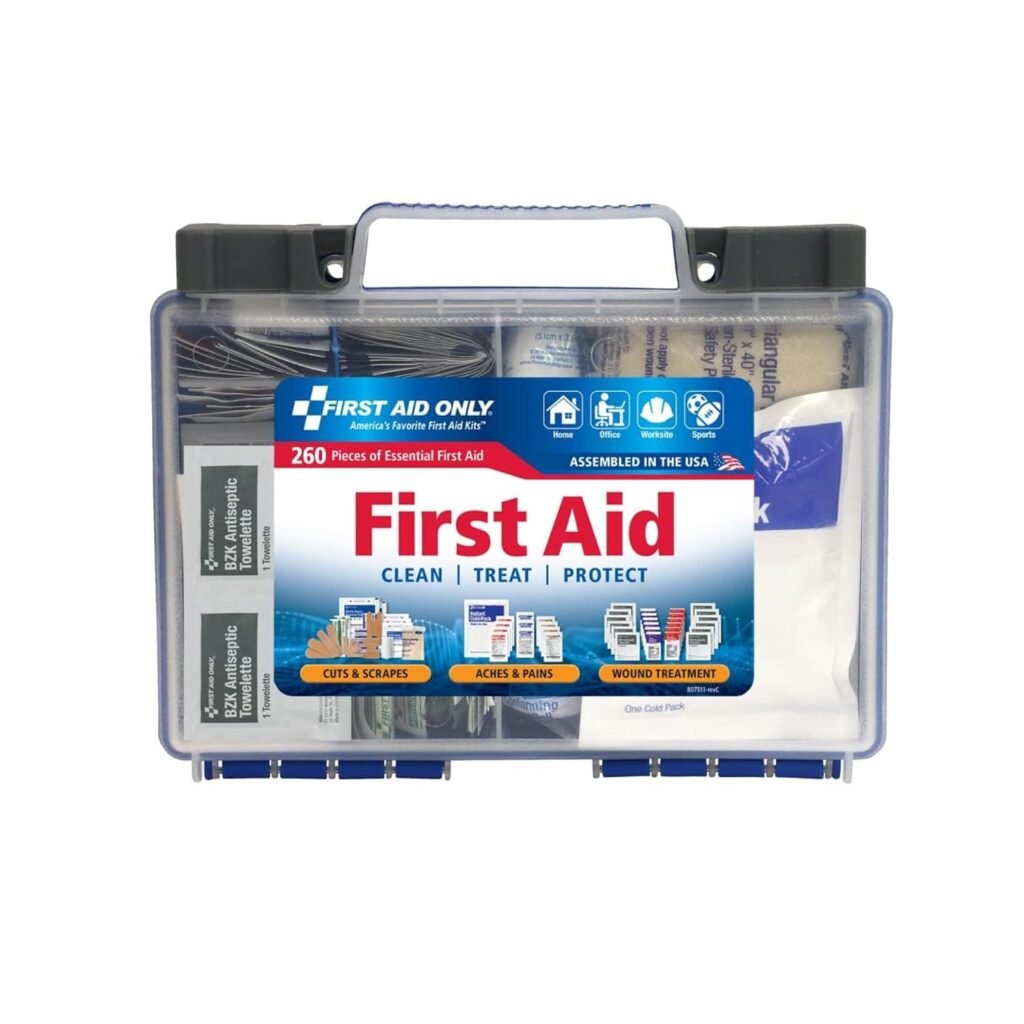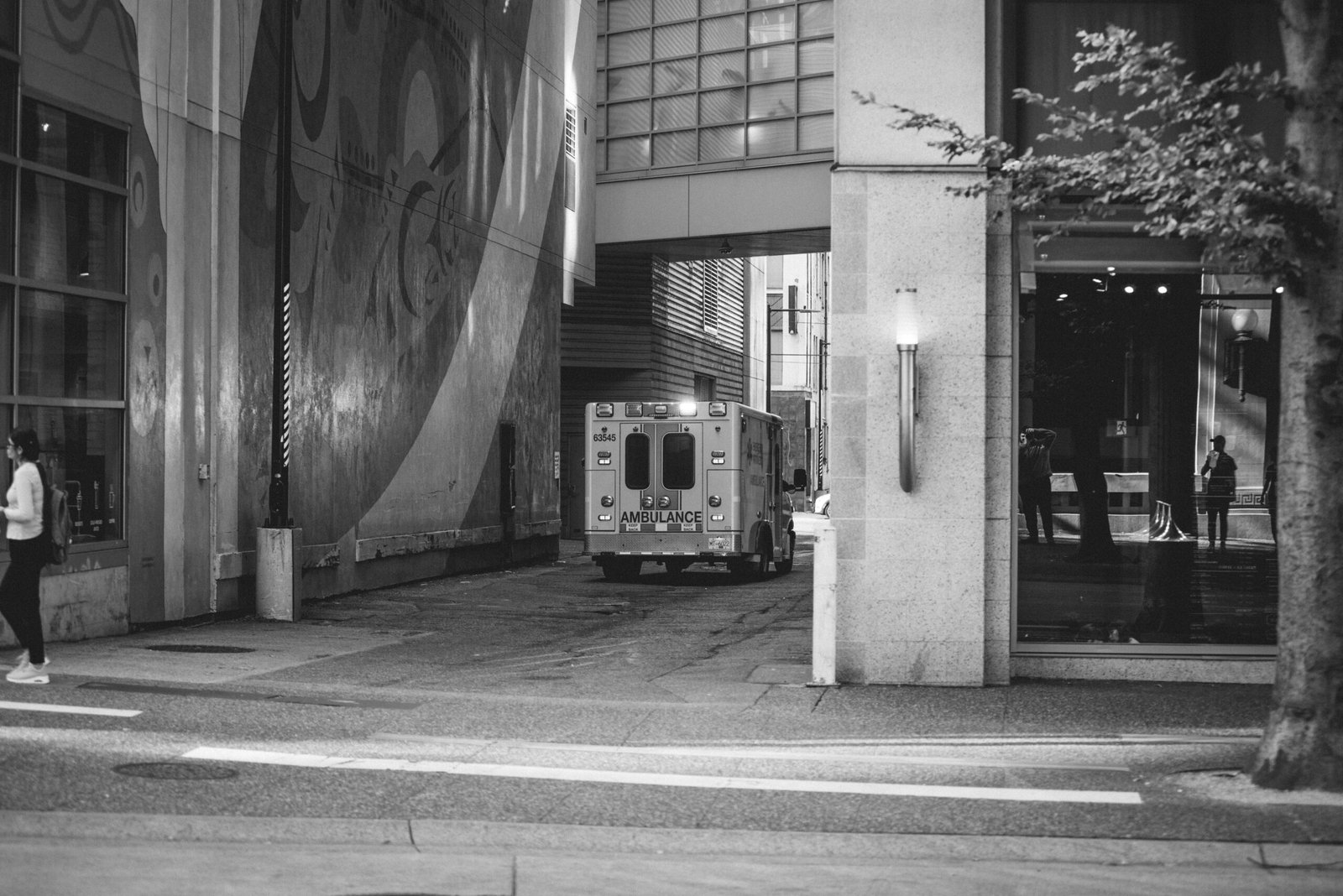Introduction to the Importance of a First Aid Kit

Having a first aid kit readily available in various environments, such as at home, work, and during travel, is essential for managing unforeseen injuries and medical emergencies. A well-stocked first aid kit serves as the first line of defense in treating everything from minor scrapes and cuts to more severe injuries. In domestic settings, it can be particularly useful for addressing common household accidents like burns, falls, and allergic reactions. At work, a first aid kit ensures compliance with safety regulations and provides immediate care for injuries, thereby minimizing the potential for complications.
When traveling, the unpredictability of new environments makes it vital to have a portable first aid kit tailored to your destination. This preparedness can alleviate the risk of escalating medical situations, especially in areas where professional medical assistance may not be immediately available. For instance, having basic medical supplies can be a real lifesaver when encountering minor injuries while hiking or when experiencing food-related illnesses during an international trip.
Moreover, the presence of a comprehensive first aid kit offers peace of mind. Knowing you are prepared to handle emergencies can significantly reduce stress and enable quicker response times, which is critical in preventing conditions from worsening. The ability to administer immediate first aid care not only has health benefits but also fosters a sense of security in various settings. This confidence can be crucial in emergencies, providing a structured response and reducing the potential for panic. Understanding the multifaceted importance of a first aid kit thus underscores its necessity across different environments.
Essential Components of a Comprehensive First Aid Kit
Assembling a versatile first aid kit requires careful selection of key items, categorized into ‘clean,’ ‘treat,’ and ‘protect’ to address various medical needs effectively. Regardless of the intended location—home, work, or travel—a comprehensive kit ensures preparedness for a multitude of situations.
Clean
The initial step in first aid is proper cleaning to prevent infections. Essential items include antiseptics like povidone-iodine solution and alcohol wipes. These are critical for sanitizing the skin and cleaning minor wounds. Saline solution is another valuable component, especially useful for irrigating eyes or larger wounds. Including multiple pairs of non-latex gloves ensures hygienic handling of injuries, reducing the risk of contamination.
Treat
Effective treatment of injuries involves various supplies aimed at accelerating healing and preventing infections. A well-stocked first aid kit should contain antibiotic ointments like Neosporin, which serves as a barrier against bacteria. For wound coverage, include an assortment of adhesive bandages in different sizes. These are indispensable for minor cuts and abrasions. Additionally, sterile pads and gauze rolls are necessary for larger wounds where bandages are insufficient. Over-the-counter pain relievers such as ibuprofen and acetaminophen are also crucial for managing pain and reducing inflammation.
Protect
Protecting injuries from further harm and contamination is essential. This necessitates items like gauze and medical tape, which help secure dressings without restricting movement. Sterile dressings are particularly important for larger or more serious wounds, ensuring a clean environment that fosters healing. Elastic bandages or wraps are invaluable for supporting sprains and strains. Moreover, including scissors and tweezers aids in managing dressings and removing debris from wounds.
By categorizing the components of a first aid kit into clean, treat, and protect, one can systematically ensure all necessary items are included. This approach not only enhances the usability of the kit but also elevates the level of preparedness for various environments and activities. Whether at home, work, or while traveling, having a well-equipped first aid kit is indispensable for managing health emergencies effectively. Ensuring the presence of these essential components can make a significant difference in the outcome of an injury or medical situation.
Customizing Your First Aid Kit for Different Settings
Tailoring a first aid kit to suit different environments is essential to ensure preparedness for a variety of medical scenarios. Each setting—home, work, and travel—has unique requirements that should be thoughtfully addressed when assembling your kit.
For a home first aid kit, additional items might be necessary to cater to specific family members, such as children or elderly relatives. Consider incorporating items like children’s pain relief medication, digital thermometers, and child-friendly bandages. For elderly family members, include blood pressure monitors, extra prescription medications, and tools for managing chronic conditions. Being prepared for minor emergencies and customizing your kit according to the household’s specific health needs can make a significant difference in urgent situations.
In a workplace setting, particularly those governed by OSHA regulations, first aid kits should be equipped to handle a range of common workplace injuries. This includes things like burn dressings, eye wash solutions, and more comprehensive bandaging materials. It’s crucial to also consider the nature of the work environment; for example, a construction site would need more robust injury management tools compared to an office. Regularly reviewing and replenishing the kit based on the specific workplace risks and OSHA guidelines will ensure compliance and safety.
When preparing a first aid kit for travel, portability and weight are critical factors. A compact and lightweight kit that can easily be carried in a backpack or suitcase is practical. Essential items should include basic wound care supplies, medications for motion sickness, altitude sickness remedies, rehydration salts, and any personal prescription medications. It’s important to also consider the destination and activities planned; for instance, a tropical destination might necessitate insect repellent and sunburn relief products. Efficient packing can be achieved by utilizing space-saving packaging options and ensuring that all necessary items are included without overloading. Ensuring your travel kit is both comprehensive and manageable will provide peace of mind during your journeys.
Maintaining and Using Your First Aid Kit Effectively
Regular maintenance of your first aid kit is crucial for ensuring its effectiveness in emergencies. Firstly, it is essential to periodically check the expiration dates of all medications and supplies within the kit. Expired items, especially those that are perishable, can lose their potency and effectiveness, rendering them useless when needed most. Replace any expired or used items promptly to keep your first aid kit fully equipped and functional.
Proper storage of your first aid kit is another critical aspect to consider. Ideally, the kit should be stored in a location that is easily accessible to everyone in the household or workplace. For instance, placing it in a prominent and central location, such as the kitchen or main office area, ensures it can be quickly retrieved during an emergency. Additionally, marking the storage area clearly with visible signs can help others locate the kit without delay.
Having a first aid kit is only half the battle; knowing how to use it effectively is equally important. Basic first aid training can empower individuals to manage minor injuries and medical situations with confidence. Consider enrolling in a basic first aid course offered by reputable organizations like the Red Cross or the American Heart Association. Many online resources and tutorials are also available to provide valuable information and practical demonstrations on first aid techniques.
As needs and circumstances change over time, it is important to keep your first aid kit updated and customized. For example, if a family member develops a medical condition that requires specific medication, ensure that the kit includes those new prescriptions. Similarly, seasonal changes, such as the addition of sunscreen for summer months or hand warmers for winter, can enhance the practicality of your kit.
In essence, regular maintenance, proper storage, and basic first aid training are essential components for the effective use of a first aid kit. Ensuring that the kit is up-to-date and tailored to meet your unique needs will enhance your preparedness in handling various medical emergencies confidently.




Please tell me more about your excellent articles
Please tell me more about this. May I ask you a question?
Your articles are extremely helpful to me. Please provide more information!
May I have information on the topic of your article?
yes
Thank you for your help and this post. It’s been great.
Please tell me more about this. May I ask you a question?
Yes
Your articles are extremely helpful to me. Please provide more information!